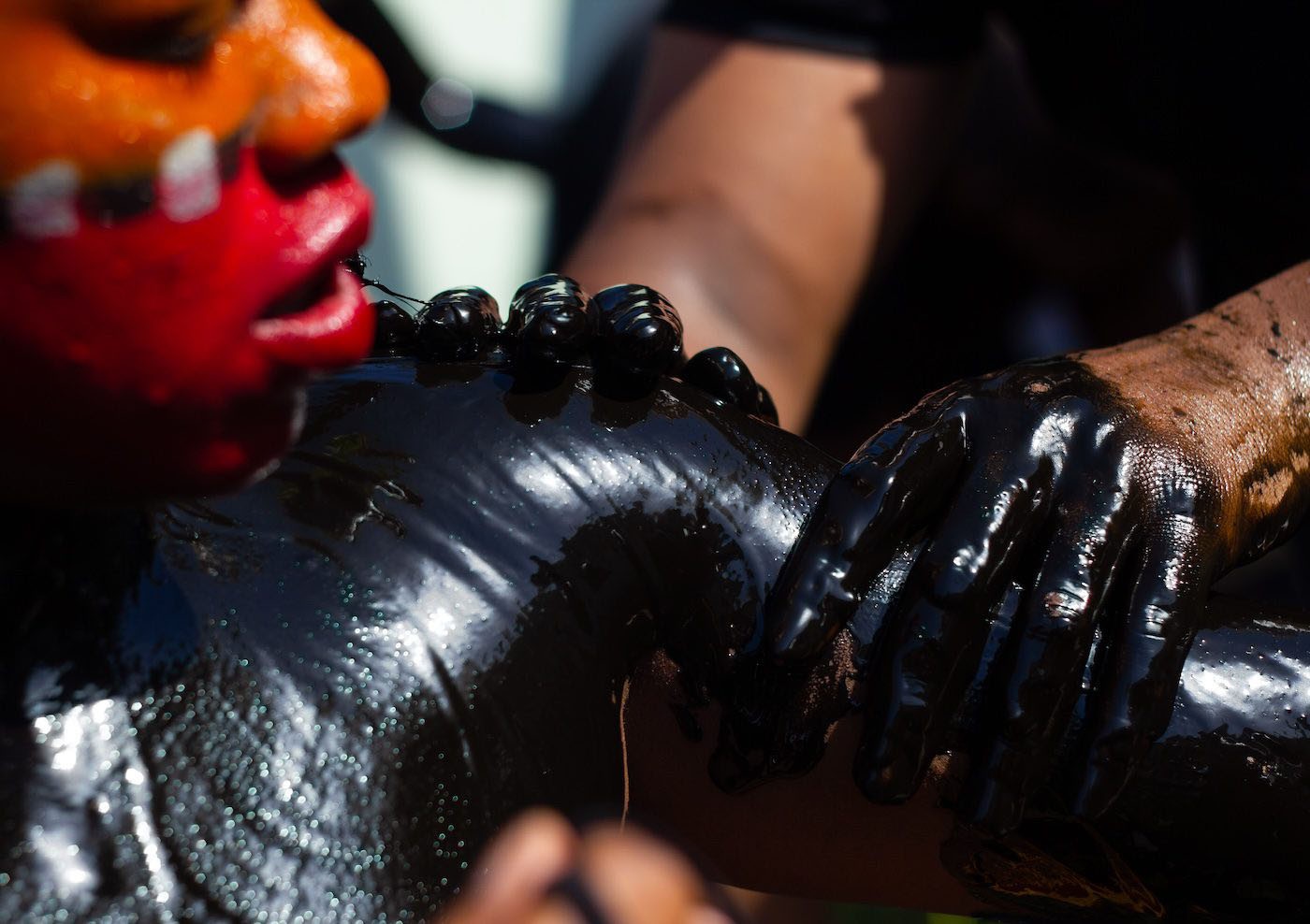Filipa Bossuet: Performance as Conversation, Intimacy as Power
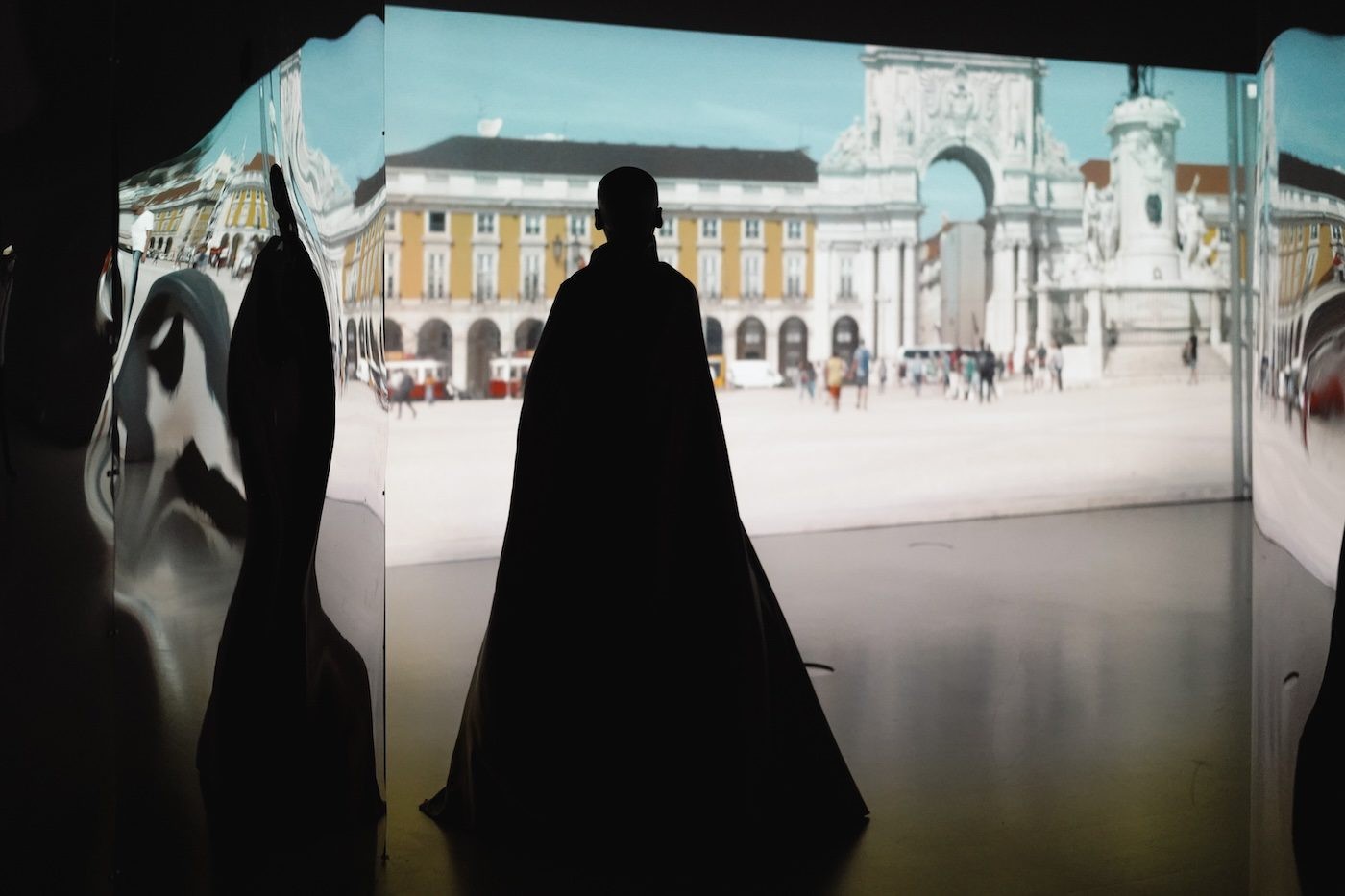
24 September 2024
Magazine C& Magazine
Words Guilherme Vilhena Martins
8 min de lecture
Having started as a vlogger, the artist uses her biography to create shared reference points beyond self-referentiality, writes Guilherme Vilhena Martins.
Portugal is home to one the largest Afro-diasporic communities in Europe, related to Lusophone countries such as Cabo Verde, Angola, São Tomé and Príncipe, Guinea-Bissau, and Mozambique. As the original western colonial empire, Portugal set a blueprint for today’s global inequalities. It is this and the persistent crisis the country faces that condition the international visibility of Portugal’s Afro-diasporic community. This series „Afterlives of History“ spotlights its artists in all their variety and complexity. First up is a portrait of multidisciplinary artist Filipa Bossuet by Guilherme Vilhena Martins.
<div class="imwrap"><div class="row">
<div class="col-lg-12 col-md-12 col-sm-12 col-xs-12 imagecont">
Filipa Bossuet, MANKAKA KADI KONDA KO II, 2022. Act III, Performance at MAAT, Lisbon. Courtesy of Joana Linda.
What does it take to start a conversation? Looking at the work of Filipa Bossuet (Portugal, 1998), it is easy to feel that performance is a form of conversation. Facilitated by painting, photography, and video, her performative dialogical practice revolves around her own identity. She uses herself as a shell, almost a stage, as a first step into discussing topics as broad as Blackness, memory, and healing, blurring the borders between public and private space.
Seizure takes many forms, too. Bossuet’s urge to create a forum goes way back. At thirteen she started a biographical vlog on YouTube. With no particular goal in sight, she would come home from school and go through her day, record it, and put it online. Whatever she felt like. A movie she had seen, expectations for the future, her day-to-day struggles. Contrary to the non-virtual world, the internet gave her relative freedom to say whatever she wanted. The more she noticed that freedom, the more she broadcast; the more she made herself visible, the more she realized how the vista could widen and multiply.
<div class="imwrap"><div class="row">
<div class="col-lg-12 col-md-12 col-sm-12 col-xs-12 imagecont">
Filipa Bossuet, MANKAKA KADI KONDA KO II, 2022. Act I, Performance at MAAT, Lisbon. Courtesy of Pedro Pina.
It did not take long for Bossuet to find that her sense of freedom had found resonance and a regular interactive audience willing to navigate the same questions. More than a mirror, the vlog became inquisitive – a platform for a shared act of questioning where her narratives could stretch. An idea of seizure was growing, the attempt to find a comfortable space to explore, to prompt discussion, and to get to know herself along the way. In a vlog there a sense of a simple gesture, as if the discovery that a muscle could stretch in a specific direction, or the sheer sense of feeling comfortable to express a feeling, a word, a question.
Early signs emerged of what came to be structural elements of Bossuet’s work, particularly its performative essence and biographical references. Familial objects are often integrated into her installations, sometimes serving as the core, operating almost as tenets for her Angolan and Congolese ascendence. Her bedroom is pivotal, for instance – a space Bossuet presents as both intimate and critical, as part of both public and private dimensions. Underlying this approach is the idea that art can serve as a proxy for a discussion that ultimately aims to bring a particular way of living to the surface in search of visibility. But is also about public space.
<div class="imwrap"><div class="row">
<div class="col-lg-12 col-md-12 col-sm-12 col-xs-12 imagecont">
Filipa Bossuet, MANKAKA KADI KONDA KO I (Detail), 2021. Courtesy of the artist.
MANKAKA KADI KONDA KO I (2021) is a good example. Bossuet created a virtual model of her bedroom and opened it to the public through a virtual exhibition, allowing anyone to visit online. Touring her bedroom, one could look closely at carefully selected objects, including her paintings, a Bob Marley vinyl, Chimamanda Ngozi Adichie’s Notes on Grief, and, most importantly, her visual diaries. Some notes on the wall were also visible, such as “Los ideales de belleza lastiman” (beauty standards harm). More than going through these objects, the point was the itinerary itself, the performative act of being let in. Being able to visit Bossuet’s room was more about what it made visible than Bossuet herself being seen.
<div class="imwrap"><div class="row">
<div class="col-lg-12 col-md-12 col-sm-12 col-xs-12 imagecont">
Filipa Bossuet, MANKAKA KADI KONDA KO II, 2022. Installation view at MAAT, Lisbon. Courtesy of Pedro Pina.
This intersection of critique and intimacy was articulated by Cindy Sissokho in a 2021 text for a group show she curated in Lisbon titled “ Our Spatial Stories Live in Performative Futures.” Sissokho spoke of “narration within a ‘home’ – the family homes, the bedroom, the photographic studio as a safe space and even the body – capturing the vernacular of the diaspora, claiming a Black presence in the city entrenched within colonial narratives/monuments and to project ‘home’ as a space for emancipatory and utopic horizons of collective living.” In Bossuet’s work, biography goes beyond self-referentiality to seek out shared reference points, conversation-starters, and shared acts of questioning that may shake a city such as Lisbon, where city-center sites glorifying its colonial past contrast with the Afro-Portuguese communities living in places structurally signaled by public entities and institutions to be peripheral.
<div class="imwrap"><div class="row"><div class="col-lg-7 col-md-7 col-sm-7 col-xs-12 imagecont">
Filipa Bossuet, UHURU, 2022. Installation view. Courtesy of the artist and Lubanzadyo Mpemba Bula.
Another example of Bossuet’s strategic blend of performativity, self-referentiality, and participation is UHURU (2022), an installation consisting of a kangulo cart loaded with cardboard boxes covered in black spray paint full of kwangas wrapped in cassava leaves, a staple food in central Africa. Evoking resistance to domination, the work is only fully realized once shared with its audience. The gently packed kwanga inside opaque black boxes are meant to be consumed in a collective performance that consists of a shared meal. Here, too, the conversation is triggered by the act of sharing.
Change in form does not mean a lack of congruency, however. For instance, “Mankaka kaki konda ko” – an expression in Kikongo, the Bantu language spoken predominantly in the Democratic Republic of the Congo, the Republic of the Congo, Gabon, and Angola, to describe unforeseen events, something like “things that happen” – emerged as an installation. As an unexpected opportunity to exhibit at Lisbon’s MAAT had come up, Bossuet installed in the museum space what was most familiar to her: her bed, her visual diaries, her family album, her paintings, and herself.
<div class="imwrap"><div class="row">
<div class="col-lg-12 col-md-12 col-sm-12 col-xs-12 imagecont">
Filipa Bossuet, MANKAKA KADI KONDA KO II, 2022. Installation view at MAAT, Lisbon. Courtesy of Pedro Pina.
A bigger stage means a bigger crowd, and a bigger crowd means a broader conversation. MANKAKA KADI KONDA KO ll (2022) was activated through a series of performances. The first and most remarkable had Bossuet lying silently on the bed as visitors wandered around the exhibition, her head resting in her hand almost defiantly, lounging with a knowing calm. In another performance, she let them go through her diaries under her careful explanation, as though they were guests. In her last performance, she roamed the premises of MAAT in a shiny piece of brown cloth, as if the roles had flipped – Bossuet now home, the formal side of the institutional framework growing strange.
No matter what the context is, Bossuet found her path using performance as conversation. She has made herself at home in an estranging framework, flipping the roles of host and guest and ultimately pointing at the possibility of reviewing museums’ hosting model. This shows that performance is a meaningful way of creating dialogue, but above all that intimacy may be a powerful way of seizing public space.
Filipa Bossuet, born in 1998 in Angola, is a multidisciplinary artist whose work spans painting, photography, and experimental video. She explores themes of identity, blackness (negritude), memory, and healing in her art. Filipa holds a degree in Communication Sciences and is pursuing a master’s in Migration, Inter-Ethnicity, and Transnationalism at NOVA FCSH in Lisbon, Portugal. Her artistic approach often incorporates performance and installation art, and she has exhibited in significant venues like the Museum of Art, Architecture, and Technology (MAAT) in Lisbon and festivals such as the Iminente Festival.
@filipabossuet / filipabossuet.com
Guilherme Vilhena Martins is a writer and curator who is interested in artistic practice as a form of discussion. He has published two books, written reviews, chronicles, and essays for different magazines, in Portuguese and English, and has curated several exhibitions in Portugal and Germany.
@gvilhenamartins / gvilhenamartins.com
Plus d'articles de
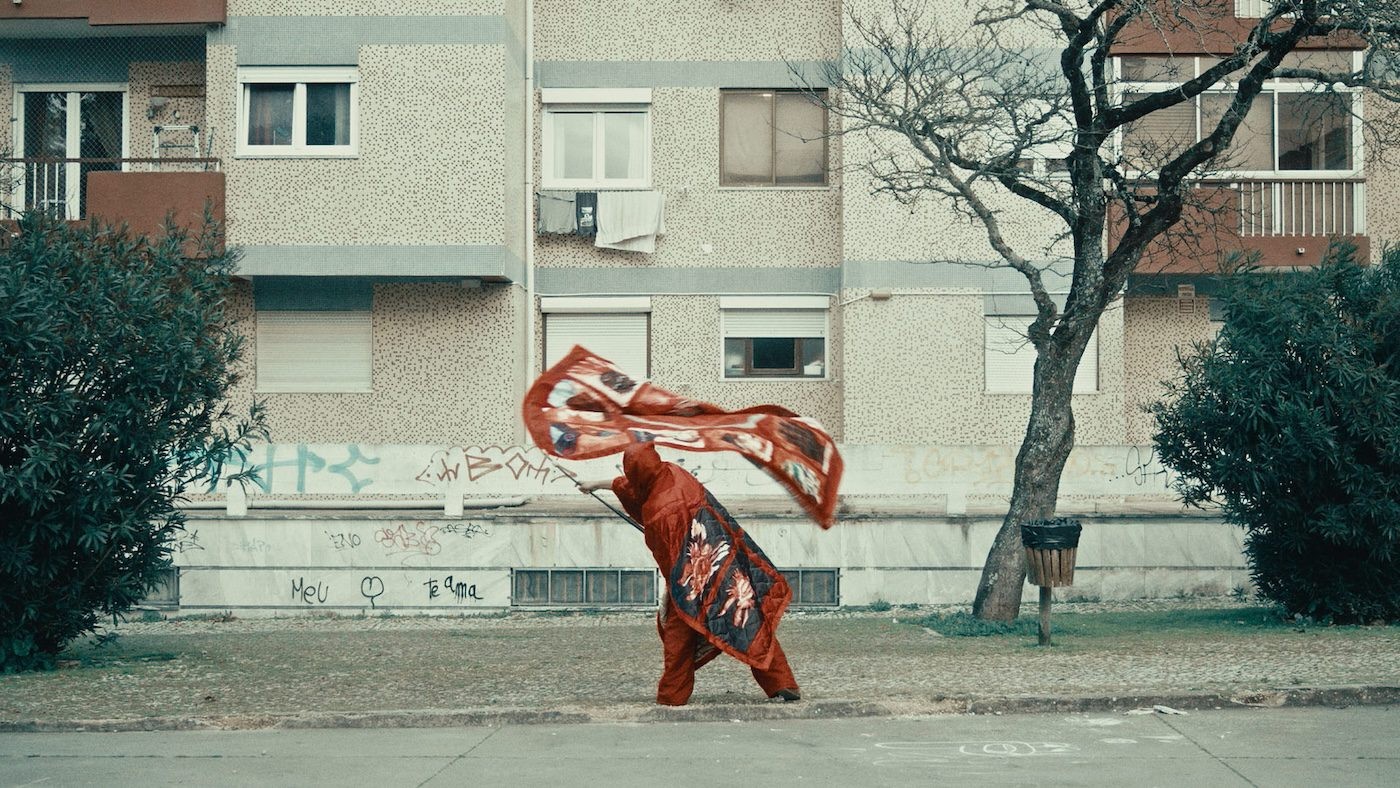
Sampling the City: Tristany Mundu’s Cypher with Linha de Sintra

The Entanglement of Migration, Indigenous Peoples, and Colonialism
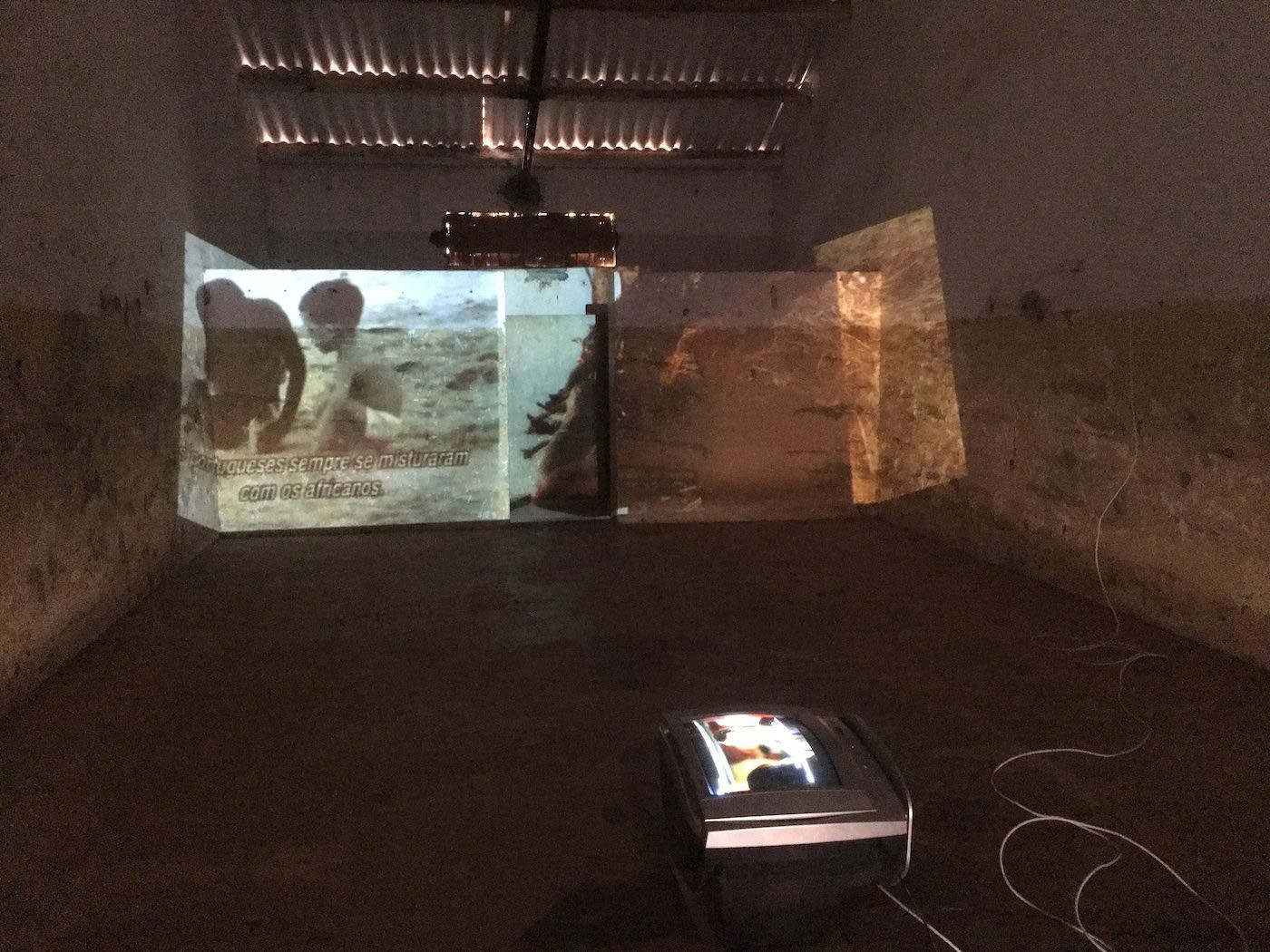
Cabo Verde’s Layered Temporalities Emerge in the Work of César Schofield Cardoso
Plus d'articles de
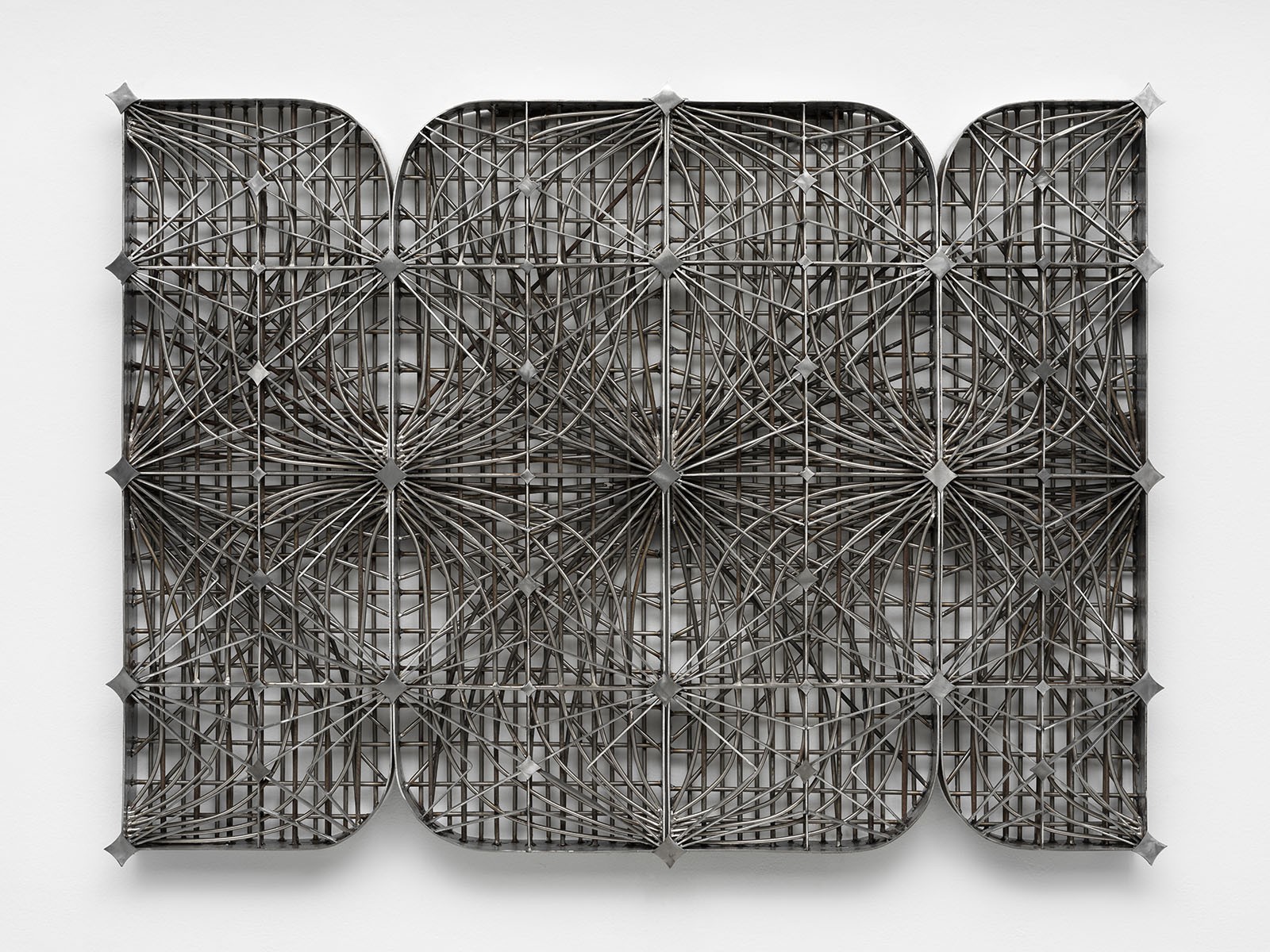
Jesús Hilário-Reyes: Dissolving Notions of Group and Individual
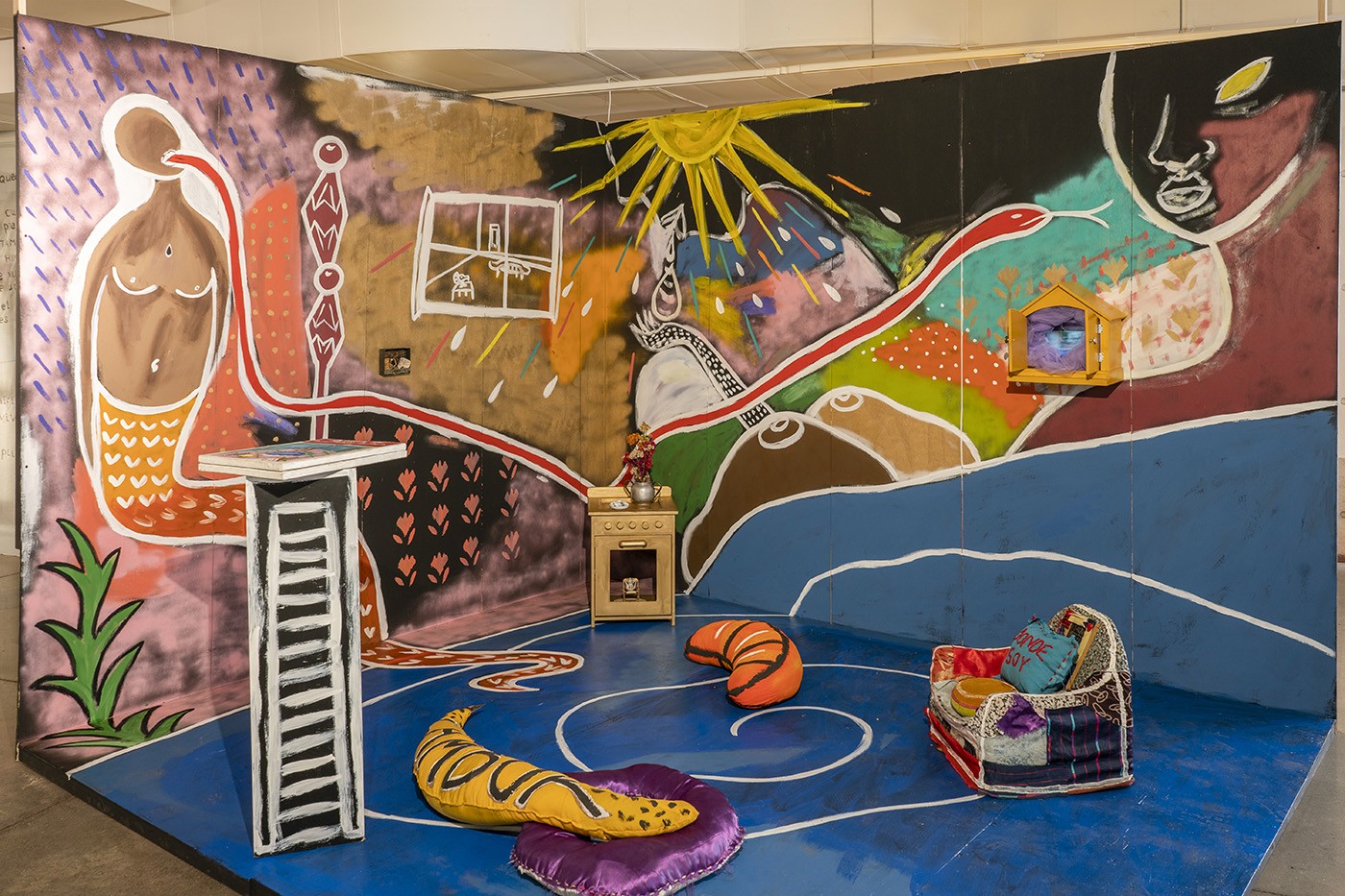
A Biennial that relates sound to space and bodies
